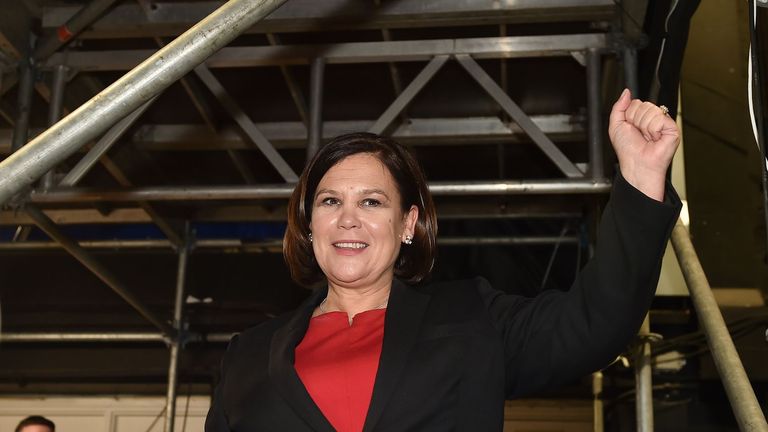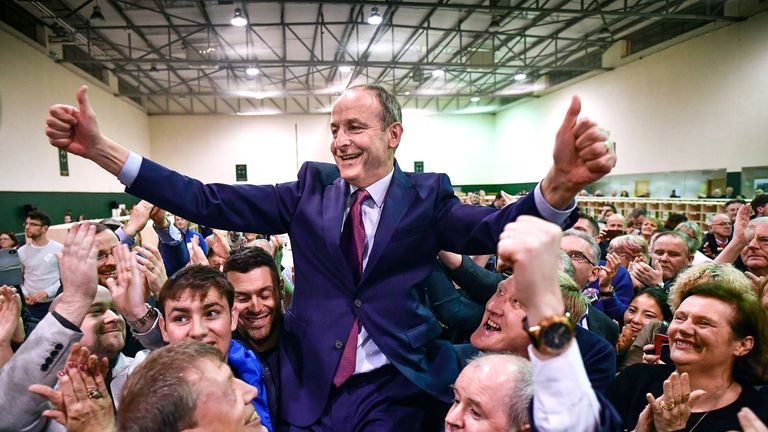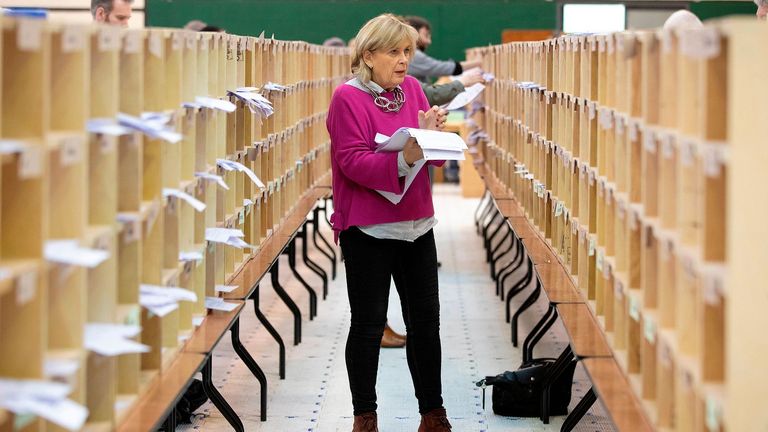Sinn Fein leads race to form government as Irish election results counted
Despite the "political tsunami" result, the party only stood half the number of candidates needed for a majority.
Tuesday 11 February 2020 00:09, UK
Sinn Fein leads the race to form a government in Ireland after winning the most first-preference votes in the general election.
The left-wing party and former political wing of the IRA took 24.5% of all votes but only fielded 42 candidates - far short of the magic number of 80 that any government needs to have a majority in the Dail parliament.
Party president Mary Lou McDonald said she wanted to lead a coalition supported by smaller parties without either of the two centre-right superpowers which have long dominated Irish-politics.
:: Could McDonald become Ireland's first female PM?
Leo Varadkar, the current prime minister whose Fine Gael party got 20.9% of the vote, has also dismissed forming a government with their support.
“For us, coalition with Sinn Fein is not an option,” he said after the election result.
Paschal Donohoe, Fine Gael's director of elections, also confirmed on Monday that his party would have some form of engagement with Sinn Fein, but ruled out going into government with them.
Meanwhile Micheal Martin, leader of Fianna Fail which won 22.2%, left the door open to an alliance with Sinn Fein.
He raised “significant incompatibility" policy issues but refused to repeat a campaign pledge not to do business with the party.
The business of coalition building is still some way off given only 78 of the 160 seats have been allocated, as counting continues thanks to Ireland’s proportional representation voting system.
A Sinn Fein-led coalition without either of the other two main parties would be a "really tall order" which would "require virtually every other member of parliament to be on board", Paste BN' senior Ireland correspondent David Blevins said.
He suggested Fine Gael and Fianna Fail could form a grand coalition, but that could be dangerous for them by making Sinn Fein the official opposition.
Or one of them could cross their red line and do a deal to go into government with Sinn Fein.
"We talk about political earthquakes, this is something of a political tsunami," he added.
Ms McDonald will have to look to the Greens, Labour, Social Democrats, Solidarity/People Before Profit, and a sizeable number of independents if she does seek to become taoiseach.
In Ireland, where coalition governments are normal, the horse-trading involved in building them can go on for a long time.
It took 63 days for an executive to form back in 2016.
“I don’t think we’re going to see any white smoke in terms of deals being done between the different parties for certainly days, probably weeks,” said Paste BN’ Ireland correspondent Stephen Murphy.
:: Listen to the Daily podcast on Apple Podcasts, Google Podcasts, Spotify, Spreaker
Downing Street is "following results carefully" as they unfold, the UK prime minister's spokesman said.
Asked about the possibility of Sinn Fein's success paving the way for a referendum on Northern Ireland joining the Republic of Ireland, he said: "We will not worry about that just yet.
"The close relationship between the UK and Ireland will continue regardless of the election result."







